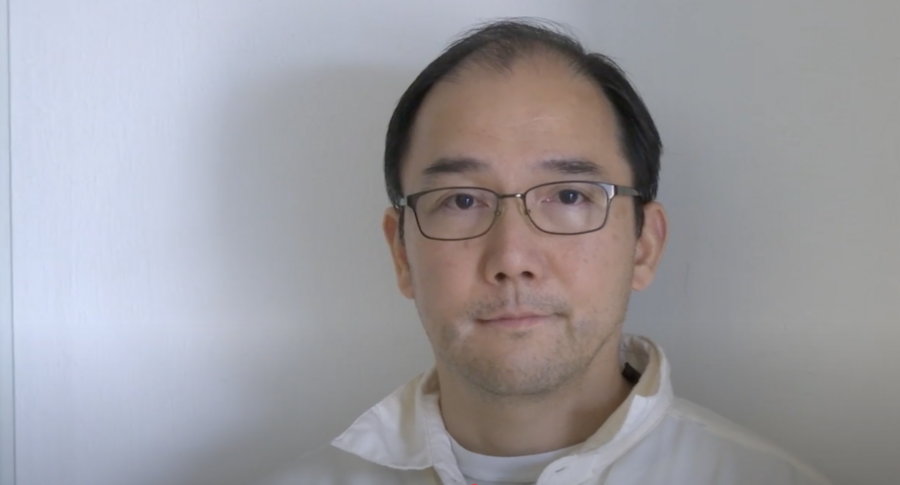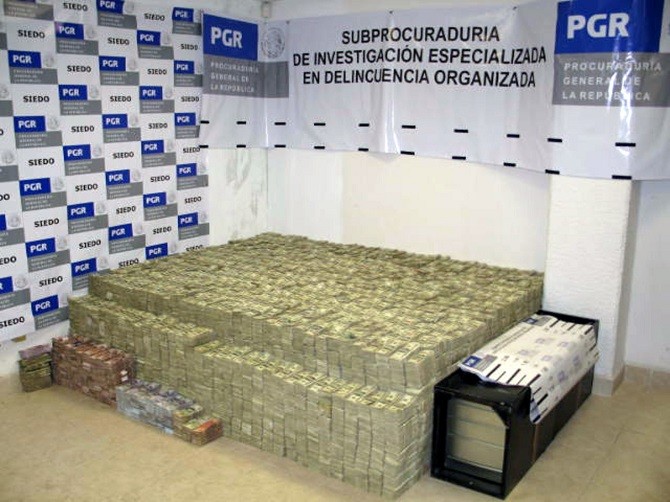A couple of weeks ago, we posted an article titled "What Does $1 Trillion Look Like?" Within that article, we posted a series of photos that demonstrated what various amounts of cash would look like if they were laid out in real life. As we showed larger and larger amounts of money, we obviously had to use photoshopped images. However, we did post three real-life photos that showed $226 million worth of cash stacked in a neat pile. As you're about to learn, that pile was discovered in the back bedroom of a suburban home in Mexico City.
After seeing those glorious mountains of money, A TON of people emailed us demanding to know more. How did this happen? When did this happen? What possible human circumstances could have unfolded to cause someone to store $226 million in cash on the floor of a back bedroom in a suburban Mexico City home??? You asked, and now we will deliver…
A Businessman With a Chemical Edge
The story begins with Zhenli Ye Gon, a Chinese-born businessman who moved to Mexico in 1996. On paper, he ran a perfectly legal pharmaceutical import/export company called Unimed Pharm Chem México. His business was authorized to import tons of pseudoephedrine and ephedrine compounds commonly found in cold medications like Sudafed and NyQuil. But those same chemicals are also critical ingredients in methamphetamine production, which is why their distribution is tightly regulated around the world.
Somewhere along the way, Mr. Ye Gon allegedly began re-directing a portion of his imports from legitimate businesses to the Sinola drug cartel. The cartel then used these precursor chemicals to manufacture massive quantities of crystal meth which were then shipped to the US.

The Raid
On March 15, 2007, Mexican federal police, working with the DEA—raided Ye Gon's Mexico City home. The house, nestled in a quiet neighborhood, didn't look like the headquarters of a meth empire. But when agents reached a back bedroom, they opened the door to what can only be described as a cash fortress.
Neatly stacked bricks of bills—organized by denomination—covered nearly the entire floor. In addition to $207 million in U.S. currency, authorities counted:
- $18 million in Mexican pesos
- $200,000 in euros
- $113,000 in Hong Kong dollars
- 11 Mexican gold bullion coins
- Expensive jewelry
- Seven luxury cars
- A cache of automatic weapons
The total value of the seizure: approximately $226 million.

Photo via US Department of Justice/Wikimedia Commons
The Fugitive and the Conspiracy Claim
Following the raid, Ye Gon fled to the United States. He was eventually captured in a suburb of Washington, D.C., and detained. But rather than quietly face charges, he claimed he was being used as a pawn,forced by the Mexican government to stash drug money on behalf of then-President Felipe Calderón's Secretary of Labor, allegedly to fund Calderón's re-election campaign. Ye Gon even suggested the real amount hidden in the home was closer to $350 million.
Astonishingly, the U.S. criminal case against him collapsed in 2009 after multiple witnesses recanted or mysteriously died. The charges were dismissed, and Ye Gon was temporarily freed.

The Story Gets Crazier
In September 2013, the Las Vegas Sands corporation (which owns several casinos around the globe) was fined $47.4 million by the US Attorney's office.
What does that have to do with Zhenli Ye Gon?
The company was being punished for failing to alert authorities to Zhenli's suspicious gambling activities that occurred over a several-year period.
Between 2004 and the raid in Mexico in 2007, Zhenli managed to gamble away just over $125 million, mainly at The Venetian (which is owned by Las Vegas Sands). FYI, every casino is obligated to alert American authorities of any suspicious transactions that may involve illicit money.
Between 2006 and 2007 alone, Zhenli transferred $45 million in cash to the Venetian from various banks and money exchanges located around Mexico. He proceeded to not only blow the entire $45 million, but also an additional $35 million he received on credit from the casino.
Zhenli was by far the largest all-cash-upfront gambler in the history of Las Vegas. Thanks to these unprecedented losses, the casinos treated him like a God. They showered him with comped rooms, private jets, meals, cars, girls… we're talking comps that are beyond mortal imagination.
In total, Zhenli lost $85 million at the Venetian and another $40 million at a small handful of nearby casinos.
For a while, this was a great deal for the casinos. They were making money hand over fist off one of the biggest whales in gambling history. Unfortunately, after the raid in Mexico City, not only did the money stop flowing, but Zhenli refused to pay back that $35 million marker.
That marker loss, combined with the $47.5 million fine, was large enough to wipe out all executive bonuses at the Venetian for 2007. The losses and fines were so large that they caused shares in Las Vegas Sands to temporarily plummet. The company's CFO even had to address the Zhenli Ye Gon incident specifically during a quarterly conference call with investors.
What Happened Next?
Although Ye Gon was briefly free, he was later re-arrested and extradited to Mexico in 2016 after nearly a decade of legal wrangling. The video embedded above shows the moment Yo Gon stepped off a plane in Mexico after the extradition. He currently remains in a Mexican prison, awaiting trial on charges related to drug trafficking and money laundering.
And the $226 million? The Mexican government pledged to use it for anti-drug initiatives and healthcare improvements, though reports have raised questions about whether the funds were fully accounted for.










 Bengali (BD) ·
Bengali (BD) ·  English (US) ·
English (US) ·